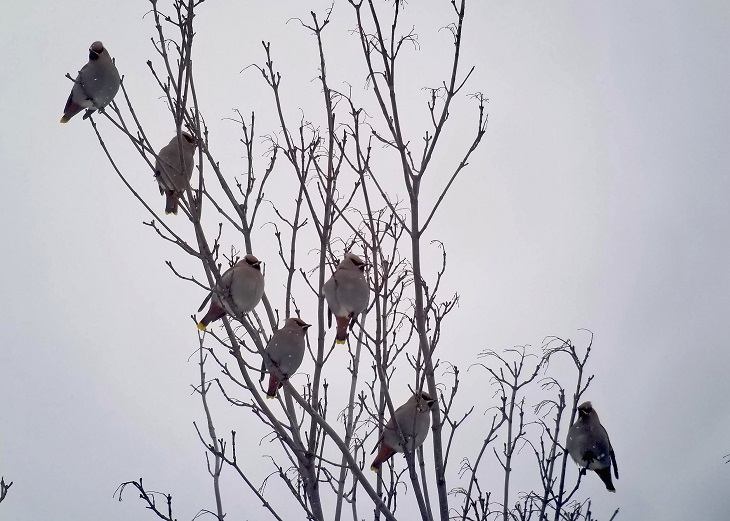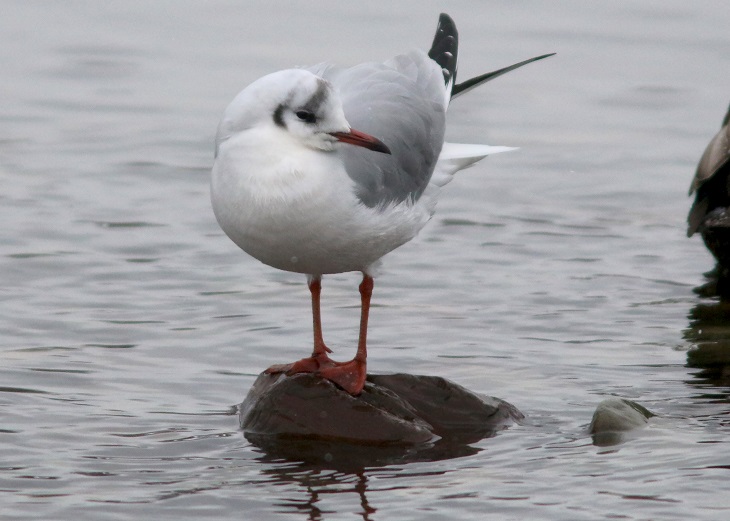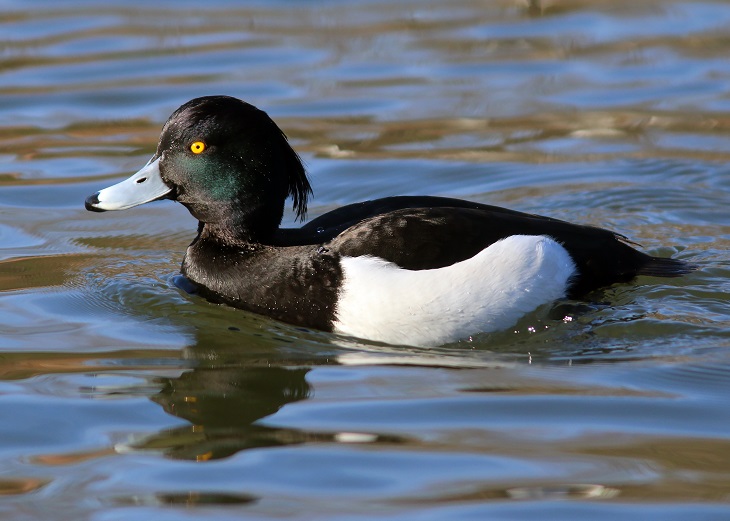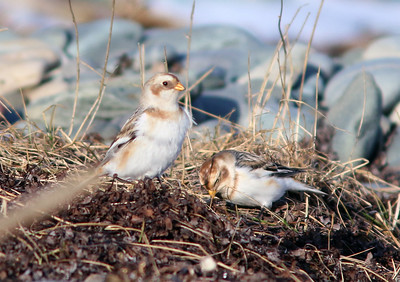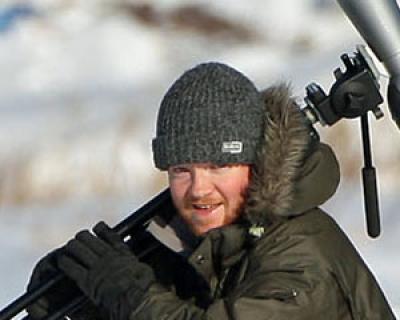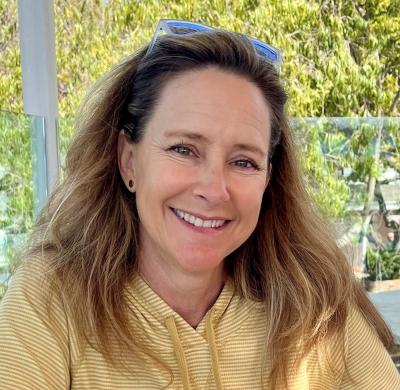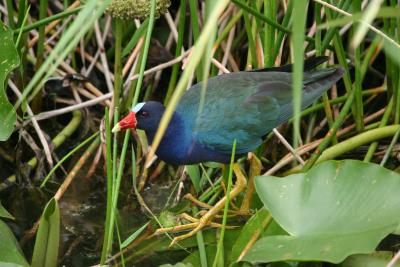Newfoundland: Winter Birds
-
Jan 6-12, 2025
Jared Clarke
-
Jan 5-11, 2026
Jared Clarke
2026 Tour Price to be Determined
2026 Tour Price to be Determined
Newfoundland may seem like an unlikely winter birding locale but in fact it’s brilliant. With Greenland to the northeast, Iceland and the rest of Europe to the east, mainland North America to the west and South America to the south, Newfoundland is the first or last land that many wayward birds see. Regardless of season, there’s almost always something interesting about, and in winter such wanderers are merely the frosting on a delectable mix of alcids, gulls, and boreal forest birds.
The city of St. John’s, population 150,000, is at the eastern extremity of the province. It’s a charming place to spend a few days and serves well as a base from which to see the region’s birds.
Day 1: Our tour begins this evening with a 6 pm meeting in our St. John’s area hotel. Night in St. John’s.
Newfoundland birding and Jared Clarke are a combination for great fun. -Michael Sacopulos
Days 2-6: Based in a comfortable hotel in downtown St. John’s, we’ll spend most of our time in and around the city and the adjacent parts of the Avalon Peninsula, venturing a bit farther afield should we hear of a stray within driving distance (as often happens).
We’ll visit Cape Spear, the easternmost point of North America, and other scenic locations along the coastline looking for Great Cormorant, Common Eider, Purple Sandpiper, Dovekie, Thick-billed Murre, and Black Guillemot. January is the best month of the year to see numbers of the charismatic little Dovekie feeding close to shore, often just a few feet off the rocks or next to a wharf where it is possible to watch them swimming underwater in pursuit of tiny crustaceans.
St. John’s is unsurpassed in North America for the large number and rich diversity of gulls observed in comfort at close range. There are six or more species present daily in winter, including moderate numbers of Lesser Black-backed, Black-headed Gulls and occasionally a European Mew (Common) Gull. Glaucous Gulls occur in the numbers and “Kumlien’s” Iceland Gulls in the thousands in the harbor and at adjacent Quidi Vidi Lake. Some winters there are ABA rarities such as Yellow-legged, and Slaty-backed or European Herring Gull.
St. John’s city ponds annually host significant numbers of wintering Eurasian Wigeon, “Eurasian” Green-winged Teal, and Tufted Ducks among the hundreds of Northern Pintails and American Black Ducks, while the boreal forest is home to resident Boreal Chickadees and northern finches including Pine Grosbeak and White-winged Crossbill. Bohemian Waxwing is abundant within the St. John’s city limits in some winters, and Gyrfalcon and Snowy Owl are always possible. Winter weather in St. John’s is similar to that of the Great Lakes. We can drive to all the good birding locations and will usually be birding near the van.
On at least one day, weather permitting, we will visit the southern portion of the Avalon Peninsula, searching carefully for alcids like Thick-billed Murre and Razorbill. Among the large Common Eider flocks, mostly of the northern subspecies borealis, we’ll hope to pick out a King. We’ll pass by several feeding stations that have in the past harbored rarities, mostly from farther south and west, but very occasionally from Europe.
St. John’s, the easternmost city in North America and some would say the oldest in Canada, has considerable Old World charm. Perched on the granite edge of the harbor, it is known for its winding streets lined with colorful houses and its excellent restaurants and pubs. Given the shortness of the days at this season, those who wish will have ample opportunity to sample town pleasures. The city of St. John’s website is http://www.stjohns.ca/.
Nights in St. John’s.
Day 7: The tour concludes this morning in St. John’s.
Note: The information presented below has been extracted from our formal General Information for this tour. It covers topics we feel potential registrants may wish to consider before booking space. The complete General Information for this tour will be sent to all tour registrants and of course, supplemental information, if needed, is available from the WINGS office.
ENTERING CANADA: U.S. citizens will need a valid passport to enter Canada and return to the U.S. Non-U.S. citizens will need a valid passport and may need tourist visas. Consult your nearest U.S. and Canadian consulates for details. Canadian citizens should carry proof of citizenship in the form of a passport or birth certificate. US citizens must bring proof of citizenship (a passport is now required – any other picture ID such as a driver’s license is no longer accepted).
Your passport, as a general rule, should be valid for at least six months after the date the tour ends. It is always a good idea to take photocopies of your passport and air ticket with you when traveling abroad. They can prove invaluable in helping you get replacements if your original documents are lost or stolen. You should pack the photocopies separately from the originals.
Citizens of other countries may need a visa and should check their nearest Canadian embassy. If required by the embassy or visa-granting entity, WINGS can provide a letter for you to use regarding your participation in the tour.
Typically on the return, you will clear U.S. customs actually in Canada (e.g., Toronto, Montreal, or Halifax), or in Newark, New Jersey, if your flight takes you directly there.
COUNTRY INFORMATION: You can review the U.S. State Department background notes on Canada at http://www.state.gov/r/pa/ei/bgn/2089.htm.
HEALTH: Winter trips have no important health requirements. Sun off snow can be dazzling and we suggest sunglasses. Adequate cold weather clothing is essential for comfort although it is unlikely that temperatures will be so low that frostbite is a major concern. Ears, feet, and hands are the most likely parts of the body to be affected and we suggest a wool hat (or equivalent) that covers the ears, warm gloves, and snow boots worn loosely enough to permit free circulation. Further clothing suggestions are included below.
SMOKING: We request that you do not smoke in the vehicles or when the group is gathered for meals, checklists, etc. If you are sharing a room with a non-smoker, please do not smoke in the room. If you smoke in the field, we ask that you do so well away and downwind from the group. If any lodge, accommodation, or location where the group is staying or gathered has a more restrictive smoking policy than WINGS’ policy, the more restrictive policy will prevail.
CLIMATE: Overnight lows could reach the single digits (F) but temperatures in the teens and 20s are more normal. Daily highs are likely to be in the 20s or 30s, but wind chill can make it feel considerably colder. Snow and/or rain are likely during the course of the tour. At this time of the year, the jet stream passes over Newfoundland, and Atlantic storms are frequent. Travel delays are frequent at this time of the year both getting into and/or out of St. John’s.
PACE OF THE TOUR: The pace of this tour is relaxed. At this time of year at this northern latitude the sun rises relatively late (approximately 7:30 am). Most of our birding is done in close proximity to St. John’s, but on at least one occasion we may have to drive as much as an hour and a half to reach our first birding stop of the day, so we’ll rise early enough to factor in driving time. The sun sets relatively early in the evening (a little before 5:00 p.m.) so our days in the field will not seem especially long and we should be able to turn in early enough each night to afford a good night’s sleep. Breakfasts each day will be sit-down affairs, while lunches will most often be taken in fast food restaurants or small cafés. Barring unforeseen circumstances, suppers will be relaxed sit-down affairs in nice restaurants in St. Johns.
Much of our birding will be done from or very near the vehicle(s) and more time is spent in the vehicles than on most tours. We will try to get out and walk when the opportunity presents itself. We will rotate seats in the vehicle(s) on a daily basis so everyone will have the opportunity to bird from every seat. When not in the vehicle, with few exceptions, birding will be done from plowed roads and walkable trails, almost always near the vehicle itself. Walking will be gentle along plowed roads and trails. Any walks through the snow will be short and will always be optional.
The main controlling element on this tour is the weather which often changes drastically from day to day. Obviously, we won’t be doing much birding if there is a blizzard. It is essential that you bring gear that will keep you warm and dry.
BATHROOM BREAKS: We will have a stop or two during most days when bathrooms will be available. There may be one day when we are further away from any establishments and a restroom break may need to be taken in nature.
ACCOMMODATION: While in St. John’s, we’ll stay at the ALT Hotel, which overlooks the St. John’s Harbour, offering spectacular views of the Narrows and which is also near some of St. John’s best restaurants.
FOOD: WINGS tours are all-inclusive, and no refunds can be issued for any tour meals participants choose to skip. While our restaurants and ground agents make every effort to ensure the comfort of all participants, please note that not all food allergies can be accommodated at every destination. Many restaurants offer set menus and are unable to accommodate all special requests within a group. Thus, clients with significant food allergies or special dietary needs should bring appropriate foods with them for those times when their needs can, regretfully, not be accommodated. Our tours are carefully scheduled to ensure the best possible birding experience. Mealtimes can generally not be adjusted; any participants who need to eat earlier or later than the times scheduled for the group should bring supplemental food with them.
TRANSPORTATION: We’ll use mini-vans for transport as larger vehicles are not at present available.
PHOTOGRAPHY: Excellent photographic opportunities exist on trips in Newfoundland. Bring all your film or extra memory cards with you, as it may be difficult to replenish stocks of the less common types. Long lenses of 300 mm or more are needed for bird pictures. If photography is one of the main reasons you are coming on the trip, please know the pace of a birdwatching tour does not always lend itself to serious photography and we want you to understand the limitations imposed by our schedule. The group will move at the leader’s pace, and may not be able to stay in a location long enough, or move around enough, to get the best lighting or photo.
2024 Narrative
Summary: Our tour was based out of St. John’s – one of the oldest cities in North America and located at its easternmost reaches. A variety of interesting and exciting species can be found around St. John’s during winter, and this year did not disappoint. Rare anywhere else on the continent, we enjoyed dozens of Tufted Ducks and several Eurasian Wigeon amid the array of more expected North American waterfowl. We even had a close encounter with a very rare Pink-footed Goose – a hands-down highlight for everyone! Among the abundance of gulls were several Black-headed and Lesser Black-backed Gulls. Local rarities came from several directions including a Ruff from Europe and two Yellow-throated Warblers from more southern climes.
Travelling outside the city on several occasions, we enjoyed more exciting birds and stunning coastal scenery. Dovekie were spotted on several days, including three very cooperative birds that provided almost intimate views. We braved the winter weather to see Bohemian Waxwings, Thick-billed Murre, Great Cormorants, Common Eider and Long-tailed Ducks, along with many other northern seabirds. White-winged Crossbills were abundant this winter, while a small flock of Red Crossbill (of the endemic “percna” race) also graced us with an appearance. Keen eyes picked out a total of three Willow Ptarmigan hiding in the open on the snowy white tundra. Our week was capped off with a flock of 60+ Purple Sandpiper foraging on the wave-battered rocks at the continent’s easternmost point! It was a fantastic tour with exciting birds, great people, and a wonderful wintry setting!
January 6: Participants arrived throughout the day with only one minimal delay due to a snowstorm the previous day. We met and enjoyed dinner at a restaurant set in a very historic part of downtown St. John’s, getting to know each other and chatting about the great birding ahead!
January 7: We started our birding with a visit to Quidi Vidi Lake – a regular stop that would become very familiar over the next few days. Here, we got acquainted with the array of gulls and ducks that spend the winter around the city. Along with the usual assortment of Herring and Great Black-backed Gulls were dozens of “Kumlien’s” Iceland Gull. Keen eyes were also able to pick out our first Lesser Black-backed Gulls of the trip. Of special note were three Black-headed Gulls – an Old World species that now occurs regularly in Newfoundland and winters on the Avalon Peninsula in small numbers. Everyone found their favourites among the very diverse duck flocks – from the flashy Eurasian & American Wigeons to the understated American Black Ducks, and even the dizzying array of domestic breeds that call the city home. The pond also hosted more than a dozen Tufted Ducks, just one of which would be rare anywhere else on the continent. It was a great chance to compare them with some of their North American cousins, including Greater Scaup, Lesser Scaup and Ring-necked Duck. Of special interest was an ABA-rare Ruff – a Eurasian shorebird that was somehow eking out a living among the snow & ice when it should be in the much warmer climates of southern Europe or Africa! Equally notable were two Yellow-throated Warblers we spotted near the lake, where these southern vagrants were visiting suet feeders placed by caring birders.
Next, we stopped at Burton’s Pond tucked at the edge of the Memorial University campus. Our prize here was a Pink-footed Goose – a rare visitor from Europe that had been hanging around the city for several weeks. This was a lifer and North American “mega” for several in the group! Two very confiding Tufted Ducks was icing on the cake.
We then headed out of the city to nearby Maddox Cove & Petty Harbour where we met two Harlequins Ducks, Green-winged Teal and a half dozen Red-breasted Mergansers fishing in the rough ocean waters. A flock of 100+ Bohemian Waxwings flew past us, twittering as they went and teasing us with such brief looks (luckily we would remedy that later this week).
Our next destination was Cape Spear National Historic Site – the easternmost point in North America and – usually — a perfect place to spot winter birds. Due to the very high winds and huge seas, we decided to simply enjoy the spectacle from the parking lot this time around and save our birding here for another visit. Regardless, the massive waves and swirling flocks of gulls were amazing to watch and difficult to tear ourselves away from.
After lunch, we drove north of the city to the outports of Torbay, Flatrock and Pouch Cove where the rolling seas were as intriguing as the birds. Black Guillemots, the most common alcid at this time of year, fed in the surf along with our first Dovekies of the week. Two Common Goldeneyes and several Greater Scaup cavorted with the local Mallards, American Black Ducks and numerous Iceland Gulls.
January 8: This morning we headed off to explore the “Irish Loop”. This scenic stretch of coast along the southeastern Avalon Peninsula offers not only great birding but also a peek at some of Newfoundland’s earliest European settlements and the ancient geology that makes this island so unique.
We spotted a very close and cooperative Dovekie at our very first stop in Bay Bulls – swimming and diving in the calm waters of a sheltered boat harbour. Several close-up Black Guillemots, a Red-breasted Merganser and a distant Great Cormorant added to the moment. Another very close Dovekie was spotted at Mobile, along with several Common Loons, Red-breasted Merganser and Common Goldeneye. A short drive down a forest road paid off when a mixed flock of Pine Siskins, American Goldfinches and Purple Finches appeared out of the quiet woods. Stopping to check them out, we ended up with stellar views of several Boreal Chickadees – and later a group of White-winged Crossbills that sat briefly but obligingly in the treetops.
At Ferryland, we were distracted from birding by the intriguing history of the “Colony of Avalon” – site of one of the earliest European settlements in North America (est. 1621). We stepped back in time with a meander through the old village and ongoing archaeological digs. Our first Bufflehead of the week dawdled offshore, while five Great Cormorants and a Bald Eagle sat atop the rocky islands that gave the community its modern name (Ferryland having been anglicized from the Portuguese “farelhão” meaning steep rocks).
Continuing south, we stopped at Renews to enjoy lunch overlooking the bay and tidal estuary. A Common Murre gave exceptional views as it swam along the beach, while a mixture of Greater Scaup, Ring-necked Ducks, Red-breasted Merganser and Common Goldeneye foraged in the shallows. A nearby feeder was relatively quiet, but we did manage to spy several Red Crossbill – the local percna race being both threatened and endemic to Newfoundland so always a treat to see.
At Portugal Cove South, we enjoyed our first looks at several species including a group of 20 Common Eiders, two White-winged Scoters and a Long-tailed Duck. A Razorbill kept playing hide-and-seek as it popped up in various places in the bay, and at least five Red-throated Loons looked regal as they actively fished in the glistening waters. We also spied our first (and only!) House Sparrows of the tour at a local feeder – accompanied by several Song and Savannah Sparrows.
January 9: We kicked off our morning with a return visit to Cape Spear National Historic Site – this time braving the cold winds and walking out to the very eastern tip of the continent. The waves continued to impress as they rose, peaked and crashed over the rocks and sent spray high into the air. Approximately 250 Common Eider looked surprisingly at home out there, riding the swell as they appeared and disappeared behind walls of water. Iceland, Herring and Great Black-backed Gulls circled over the ocean, and two Bald Eagles chased each other while playing in the wind. Quite the winter experience!
Arriving back in the city, we stopped at Bowring Park and enjoyed a much more sheltered stroll through along the trails and walkways. The duck pond was busy with Mallards, American Black Ducks, Northern Pintail and even a few Tufted Ducks. A Downy Woodpecker was spotted creeping along a high branch, Blue Jays called from the treetops and a Belted Kingfisher rattled as zipped over the pond. A mixed flock of American Goldfinch, Pine Siskins and Black-capped Chickadees also stopped in to check us out. Checking in on the Pink-footed Goose, we found that it had moved from its normal pond (which was mostly frozen over) to a nearby marsh. We enjoyed much better looks this time as it actively fed on the abundant grasses and other vegetation.
Quidi Vidi Lake had also frozen over since our first visit two days prior, providing a very different perspective on the local birds. The many ducks were now concentrated in small patches of open water along the shore, offering point blank views and excellent photo opportunities. Hundreds of gulls were loafing on the newly formed ice, including our first good looks at Glaucous Gulls. A hybrid Lesser Black-backed Gull x Herring Gull provided an interesting study, as did a leucistic Great Black-backed Gull that initially threw us for a loop. We even spotted the Ruff trying to stay warm at the river inflow.
After lunch we drove to the communities of Kelligrews and Holyrood in nearby Conception Bay South. Among the birds feeding in the surf were five Black-headed Gulls, two Common Loons and a handful of Red-breasted Mergansers and Common Goldeneye. A lucky sighting out the van window led to us to a flock of 60+ Bohemian Waxwings sitting in a bare tree – killer views of this most beautiful nomad of the north. The highlight at Holyrood wasn’t a bird but two Harp Seals lounging in the boat harbour, although several distant Dovekie ranked a close second. We made it back to St. John’s in plenty of time for a leisurely dinner in historic downtown.
January 10: With a nice day in store, our group was excited to return to the southeast Avalon and continue exploring the tundra and rugged coastlines of the “Irish Loop”. We approached the area from the opposite direction as before, heading first to the beautiful and sheltered waters of St. Mary’s Bay. Our first stops at Forest Field & Riverhead found three Bald Eagle gathered on the ice edge, and at least a dozen Red-breasted Mergansers and Common Goldeneye gathered in the estuary. Several Northern Flickers and two Blue Jays were spotted along the road, and our first of numerous Common Ravens on the day kept an eye out from the treetops.
We stepped into the sunshine at the mouth of the bay in Point LaHaye, walking across the exposed headland to peer out in to the open Atlantic. Dozens of Common Eider, Long-tailed Ducks and two White-winged Scoters were bobbing up and down on the large waves offshore, while numerous gulls buzzed along the coast. We “dipped” on our main target here as the local Purple Sandpiper flock was nowhere to be found - but fortunately we had better luck the following day! The ocean and long barrier beach (known locally as a barachois or barrisway) at St. Vincent’s was somewhat quiet, although several Common Loons, Black Guillemots, Razorbill and Common Eiders were hanging out offshore.
Next we visited St. Shott’s, a quaint but barren community at the southernmost tip of Newfoundland. Driving along the vast sub-arctic tundra to get there, we spotted a locally scarce American Kestrel as it flew down and successfully snagged a rodent for lunch! We enjoyed our own lunch atop the cliffs, overlooking a large bay and kelp-strewn beach. It was on our drive back across those same barrens that we scored a major target of the day – two snowy white Willow Ptarmigan foraging on the also snowy white tundra. We watched these first two for some time until they eventually flew off, and soon spotted another very close to the road that posed for stellar views and many photos. Wow!
Our next stop in Trepassey proved to be quite productive. Dozens of birds dotted the long, sheltered harbour including four Surf Scoters, a flock of White-winged Scoters and numerous Red-breasted Mergansers. At least six Dovekie were spotted, along with a Razorbill and several Black Guillemots. A personal highlight was catching up with a locally rare “western” Willet that was hanging out on a local beach – a casual visitor to the province and the first ever winter record. There is potential that the AOU will eventually split this into a separate species ;) It was buddied up with a Black-bellied Plover, another new addition to our trip list. Three Savannah Sparrows crept along the seawall, and we heard the distinct twittering of Snow Buntings as they foraged somewhere nearby. Three Black-headed Gulls also picked amongst the exposed rocks, adding to an impressive tally of more than ten now seen during the tour.
A brief stop at Biscay Bay included the sighting of a Northern Harrier as it flew deftly over the inner cove, scaring up a flock of Greater Scaup as it went. Harriers are scarce here in winter, so a fine “last bird of the day” as we beelined north towards St. John’s.
January 11: We awoke this morning to our first real precipitation of the tour – a light but messy mix of rain and ice pellets. It didn’t dampen our spirits, but we did take time to enjoy a more relaxed breakfast than usual before heading out. It also didn’t dampen our birding, as we quickly ticked some targets off our “to find” list for the day! First up was a tour of St. John’s harbour’s famous “outer battery”, where we enjoyed better looks at several Great Cormorants. Heading back to Maddox Cove, we braved the sleet and found a Thick-billed Murre (along with two Dovekie and a Harbour Seal) bobbing in the bay – a coup of sorts having not found any earlier in the week.
Visiting a couple city ponds, we scanned the growing gull flocks and practiced our ID skills, with participants expertly picking out two Lesser Black-backed Gulls among the hordes. At Kelly’s Brook, we spotted a long Eurasian Green-winged Teal (aka Common Teal) amongst the more abundant American variety – considered a separate species by some authorities and a potential “pocket tick” should the split finally be accepted in North America.
After a much deserved break and hot lunch, we returned for a final visit to Cape Spear National Historic Site – this time in hopes of finding the Purple Sandpiper that had eluded us all week. Victory was swift as we immediately spotted them on the wave-battered rocks! We spent ages watching the flock of more than 60 sandpipers, dodging crashing waves as they searched for tiny morsels of food.
We ended our tour right where it began, at Quidi Vidi Lake – all the “usual suspects” there now feeling like old friends. But there is always something new to see, and this time it was a “Glaucoides” Iceland Gull. This pale, white-winged form of Iceland Gull is rather rare in North America, with just a few showing up in St. John’s each winter amongst the thousands of “Kumlien’s” Iceland Gulls. It was an excellent study and the perfect end to our week of winter birding.
January 12: Ann & Caroline rose while it was still very dark, catching an early morning flight. Doug & Patricia enjoyed a more relaxing morning, departing lunchtime but with a long set of travels ahead. Margie enjoyed exploring the local museum and art gallery before heading off in the evening. I know everyone left with several “life birds” under their belt, some fabulous birding experiences, and hopefully warm memories of our cold northern winter. It was a wonderful week spent with great people, fantastic birds and all in a beautiful place!
Jared was an excellent leader. Not only did he find great views of the birds, he also answered my many questions about the different species and subspecies. Very informative. I really appreciated how Jared also shared the history and geology of St. John’s and the beautiful Avalon peninsula, giving us a better understanding of his “backyard”. I would go on a tour with him again, for sure!
- Jayne B. on Newfoundland: Winter Birds
Jared Clarke is a tremendous leader. Newfoundland birding and Jared Clarke are a combination for great fun.
- Michael S. on Newfoundland: Winter Birds
I have been out with some very good birding leaders who lead for Wings and other companies. Jared was the best. Not only did he know where to find birds, including a Northern Goshawk, he was great at getting everyone the looks they wanted. The Snowy Owl at the end was the best of all. I'd go birding with Jared anywhere.
- Kathy M. on Newfoundland: Winter Birds
Jared did a great job of being flexible and tailoring our day trips to meet our objectives (seeing target birds) as the weather was constantly changing. His knowledge of the birds of Newfoundland, and North America in general, facilitated our ability to find and enjoy the birds. His overall knowledge of, and enthusiasm, for Labrador and Newfoundland greatly enhanced the experience.
- Lea L. on Newfoundland: Winter Birds
Newfoundland birding and Jared Clarke are a combination for great fun.
- Michael S. on Newfoundland: Winter Birds
Maximum group size 5 with 1 leader.


